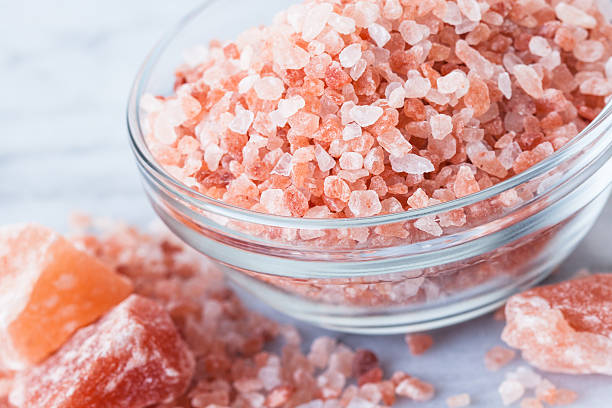
n recent years, pink salt has gained popularity as a healthier alternative to traditional table salt. Mined primarily from the Himalayan region, this rosy-hued mineral has sparked interest not only for its aesthetic appeal but also for its purported health benefits. Let’s delve into what makes pink salt unique and explore its potential advantages:
What is Pink Salt?
Pink salt, also known as Himalayan salt, derives its distinctive color from trace minerals such as iron oxide. It is harvested from ancient sea salt deposits, believed to be millions of years old. This salt is typically hand-mined and minimally processed, retaining more of its natural mineral content compared to refined table salt.
Health Benefits of Pink Salt
Rich in Minerals
One of the primary reasons pink salt is lauded is its mineral content. It contains trace minerals like calcium, potassium, magnesium, and iron, which are often stripped away during the refining process of table salt. These minerals are essential for various bodily functions, including bone health, muscle function, and electrolyte balance.
Lower Sodium Content
Despite the hype surrounding pink salt, its sodium content is comparable to that of table salt. However, because of its larger crystal size, people may perceive it as saltier and therefore use less. Using less salt can help manage sodium intake, which is crucial for individuals with hypertension or those aiming to reduce their overall sodium consumption.
Natural Electrolyte Balance
The balance of minerals in pink salt is thought to support electrolyte balance in the body. Electrolytes are essential for maintaining hydration, nerve impulses, and muscle function. Incorporating pink salt into your diet may help replenish these vital minerals lost through sweat during exercise or hot weather.
May Contain Trace Elements
Advocates suggest that pink salt may contain trace elements not found in table salt, which could potentially offer additional health benefits. However, the concentrations of these trace elements are minimal and may not significantly impact health in the quantities typically consumed.
How to Use Pink Salt
Pink salt can be used in the same way as regular table salt. It can be sprinkled on food during cooking or added as a finishing touch to dishes. Some people also use pink salt in bath salts or as decorative salt blocks for serving and cooking.
Considerations and Conclusion
While pink salt does offer potential health benefits, it is essential to note that these benefits are modest compared to the claims sometimes made by proponents. It should not be considered a cure-all or a substitute for a balanced diet rich in whole foods.
As with any dietary change, moderation is key. If you have specific health concerns or conditions, consult with a healthcare professional before making significant changes to your salt intake.
In conclusion, while pink salt’s mineral content and natural origins set it apart from refined table salt, its health benefits should be approached with realistic expectations. Incorporating it mindfully into a balanced diet can add variety and flavor while potentially offering some additional minerals to support overall health.
Remember, the best approach to health is a varied diet rich in whole foods, complemented by sensible choices when it comes to seasoning and flavoring your meals.







